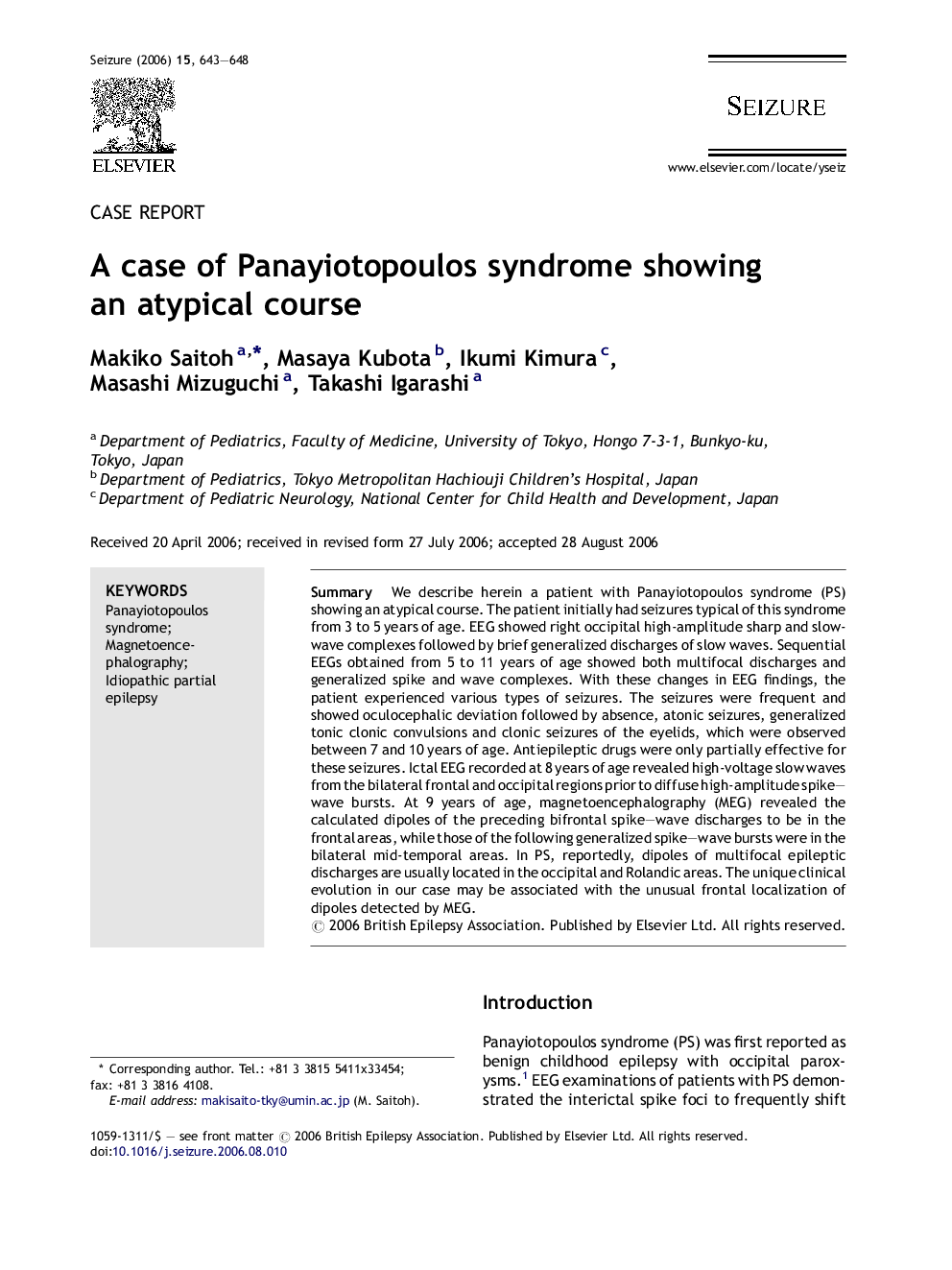| Article ID | Journal | Published Year | Pages | File Type |
|---|---|---|---|---|
| 342862 | Seizure | 2006 | 6 Pages |
SummaryWe describe herein a patient with Panayiotopoulos syndrome (PS) showing an atypical course. The patient initially had seizures typical of this syndrome from 3 to 5 years of age. EEG showed right occipital high-amplitude sharp and slow-wave complexes followed by brief generalized discharges of slow waves. Sequential EEGs obtained from 5 to 11 years of age showed both multifocal discharges and generalized spike and wave complexes. With these changes in EEG findings, the patient experienced various types of seizures. The seizures were frequent and showed oculocephalic deviation followed by absence, atonic seizures, generalized tonic clonic convulsions and clonic seizures of the eyelids, which were observed between 7 and 10 years of age. Antiepileptic drugs were only partially effective for these seizures. Ictal EEG recorded at 8 years of age revealed high-voltage slow waves from the bilateral frontal and occipital regions prior to diffuse high-amplitude spike–wave bursts. At 9 years of age, magnetoencephalography (MEG) revealed the calculated dipoles of the preceding bifrontal spike–wave discharges to be in the frontal areas, while those of the following generalized spike–wave bursts were in the bilateral mid-temporal areas. In PS, reportedly, dipoles of multifocal epileptic discharges are usually located in the occipital and Rolandic areas. The unique clinical evolution in our case may be associated with the unusual frontal localization of dipoles detected by MEG.
